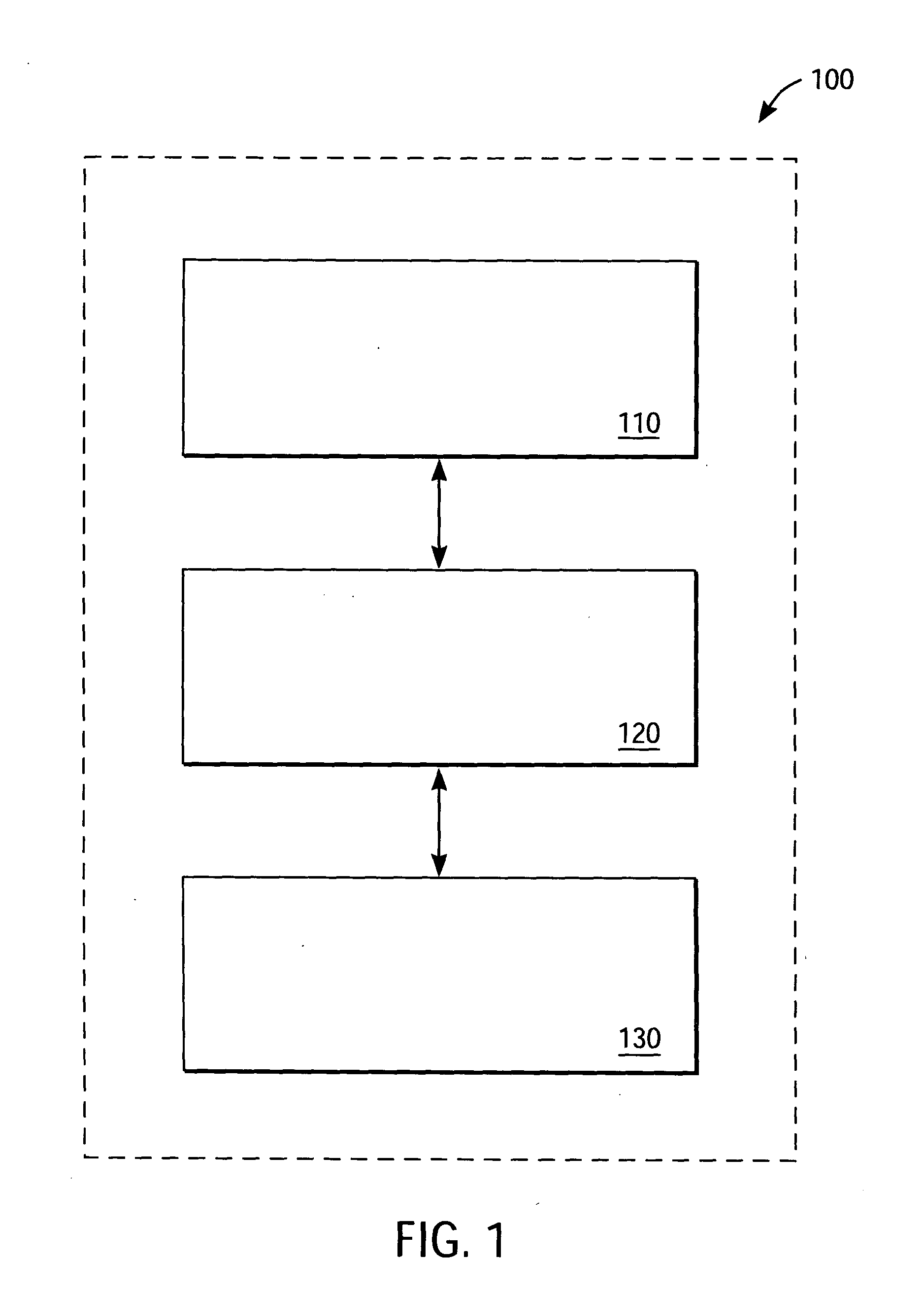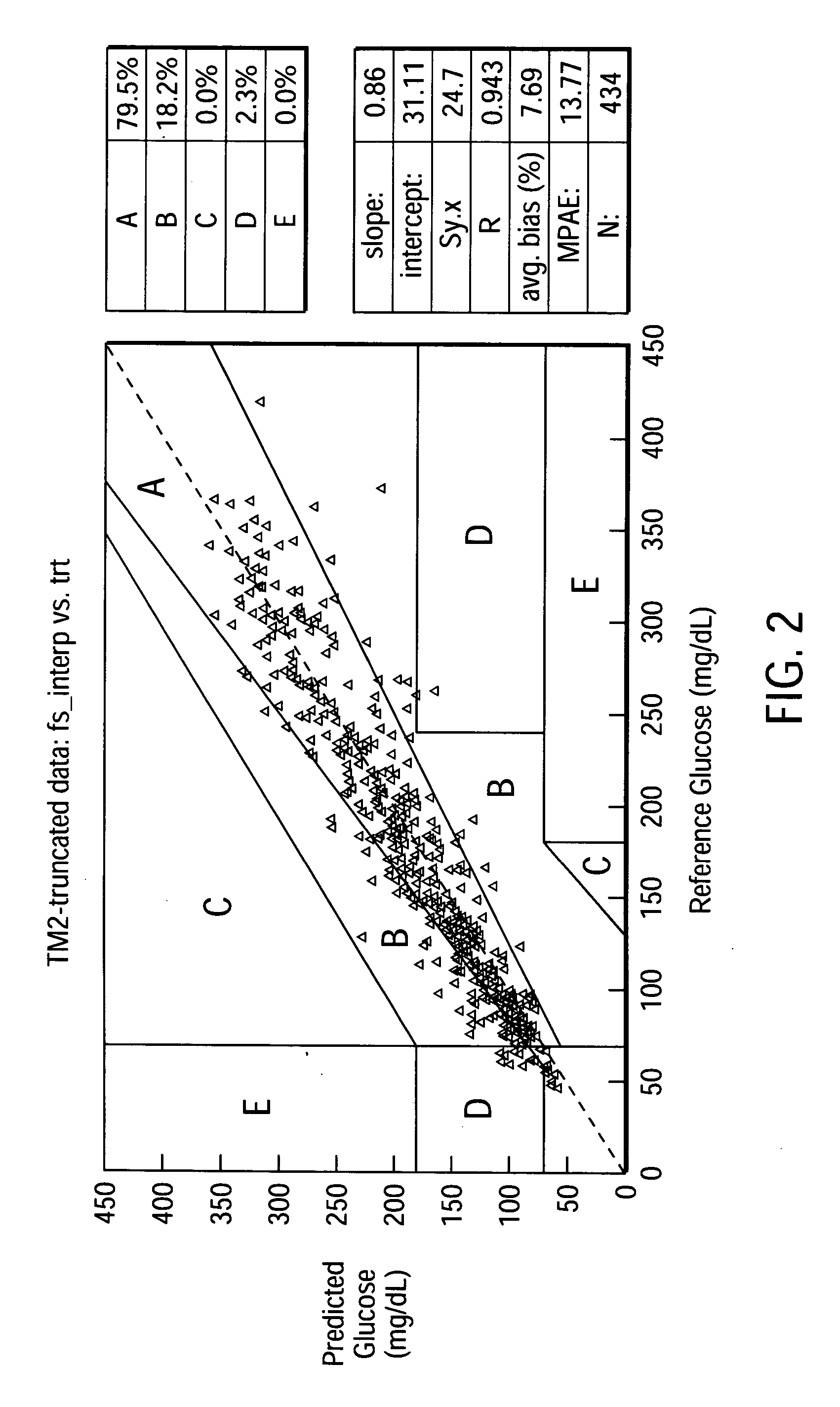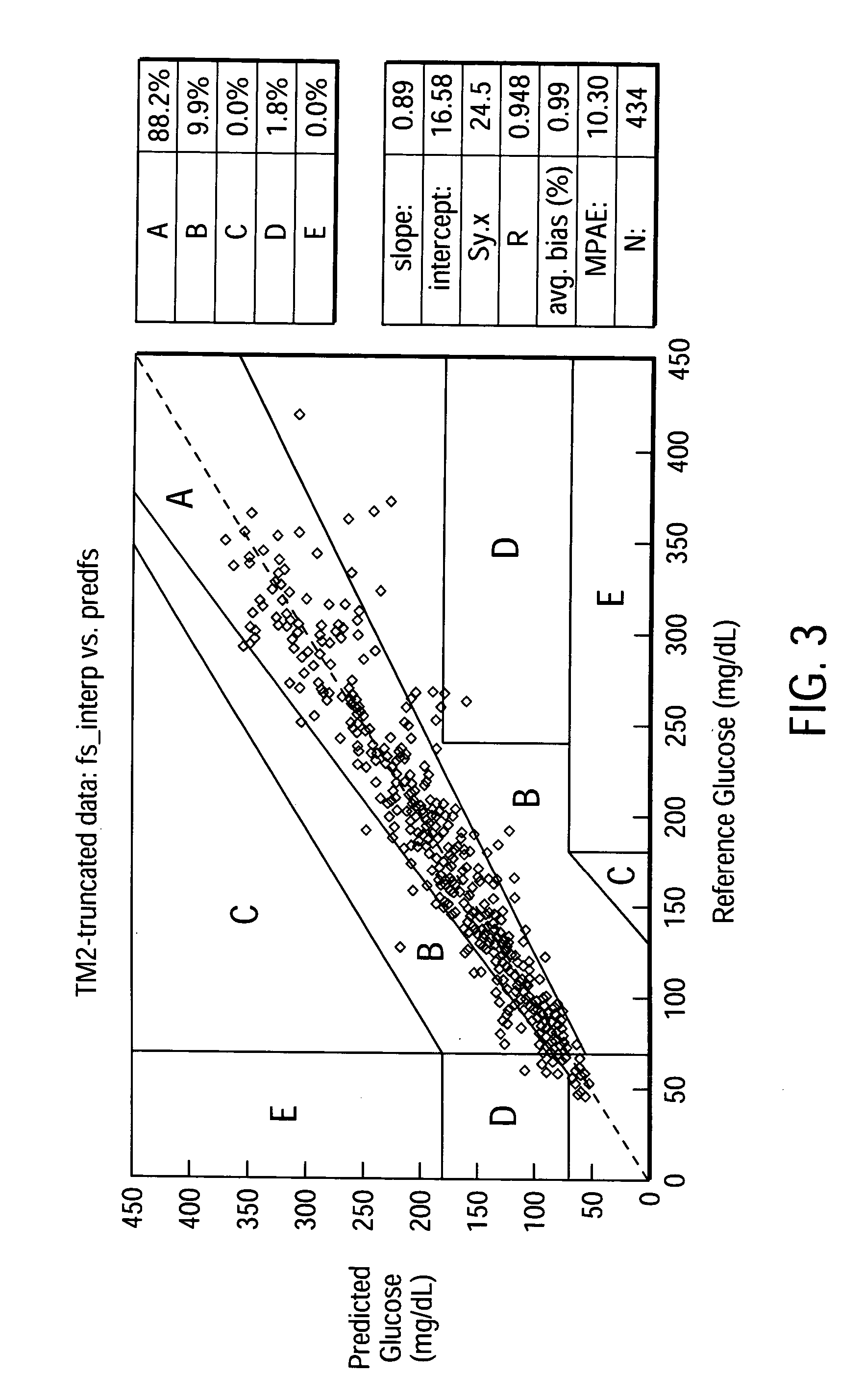Analytical device with prediction module and related methods
an analytical device and prediction module technology, applied in the field of analytical devices, can solve the problems of inaccuracy of isf analytical devices, affecting the analysis of analyte volume errors, sensor fouling, etc., and achieve the effects of dampening noise, removing noise from data, and increasing the accuracy of analytical devices
- Summary
- Abstract
- Description
- Claims
- Application Information
AI Technical Summary
Benefits of technology
Problems solved by technology
Method used
Image
Examples
example 2
[0068] Predictive Algorithm for a Glucose Analytical Device Utilizing ISF.sub.i.sup.k, rate.sub.j, ma.sub.nrate.sub.m.sup.p, Significant Interaction Terms
[0069] Employing the same data set as in Example 1 above, algorithms employing ISF.sub.i.sup.k, rate.sub.j, ma.sub.nrate.sub.m.sup.p, significant interaction terms were developed as described below. The algorithms employed smoothing variables of the general form ma.sub.nrate.sub.m (discussed above) using two to four point moving averages. Weighting variables were also included to improve the algorithms' ability to accurately predict blood glucose concentration from the series of ISF glucose concentrations. The weighting algorithm used was as follows (in SAS.RTM. code):
2 weight4=ISF**-4; newweight=200; if ma1rate1 0 then newweight=(weight4*(abs(ma1rate1)+1)**2) / (1+rate1); end; if ma1rate1 > 0 and ma3rate1 >= 0 then do; if rate1 >= 0 then newweight=weight4*(1*rate1+1)**2; if rate1 0 then do; if rate1 >= 0 then newweight=(weight4*(1...
PUM
 Login to View More
Login to View More Abstract
Description
Claims
Application Information
 Login to View More
Login to View More - R&D
- Intellectual Property
- Life Sciences
- Materials
- Tech Scout
- Unparalleled Data Quality
- Higher Quality Content
- 60% Fewer Hallucinations
Browse by: Latest US Patents, China's latest patents, Technical Efficacy Thesaurus, Application Domain, Technology Topic, Popular Technical Reports.
© 2025 PatSnap. All rights reserved.Legal|Privacy policy|Modern Slavery Act Transparency Statement|Sitemap|About US| Contact US: help@patsnap.com



